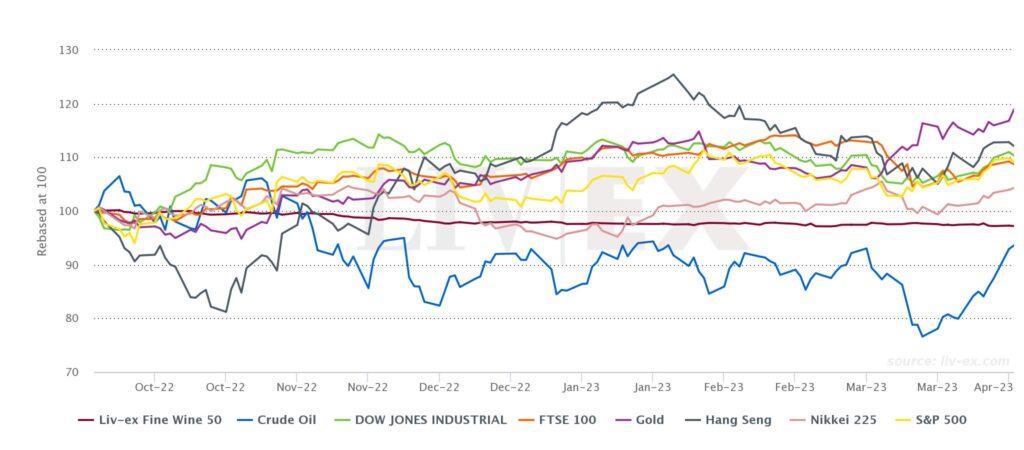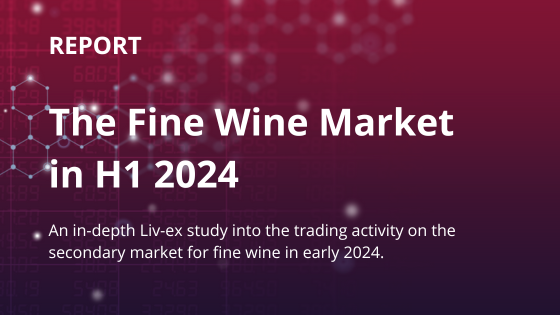- Fine wine was able to weather some of the currency fluctuations throughout the quarter. The Liv-ex Fine Wine 50, which is measured in sterling, fell just 0.7% in Q1.
- Despite modest improvements in March, it is important to note that all of the major Liv-ex indices are down year-to-date.
- The Rhone 100, which is often considered one of the most stable regions in the fine wine market, recorded the second-biggest fall, at -4.9%.
Fine wine 50 vs equities

The first quarter is acquiring a reputation for being a turbulent quarter. This time last year, the Russian invasion of Ukraine had exacerbated inflation concerns, while the knock-on effect of war caused oil, gas and metals to rise in price which further impacted struggling global supply chains. To add to the situation, China — a major buyer on the secondary market — endured a severe wave of Covid-19, turning its mega-cities into ghost towns.
One year on, the world is once again witnessing major turbulence but this time, it’s financial in nature. The collapse of Silicon Valley Bank sent shockwaves through markets, closely followed by the controversial UBS takeover of its rival Credit Suisse. Surprisingly, the impact of these events on markets has been minimal. The Federal Reserve reiterated its confidence in the US banking system and raised interest rates by 0.25% for two consecutive months, and the ECB followed suit, raising them by 0.50% in February and March.
In the UK, while a recession is still on the cards at some point this year, the decline in GDP is less dramatic than predicted, in part due to falling energy prices. Inflation still presents a risk and was stronger than forecasted last quarter. Jeremy Hunt’s UK budget faced criticism from the UK drinks industry due to alcohol duty increases in line with inflation.
Following plans from the government to raise the retirement age, France has been plunged into a chaos of strikes and protests. The disruption in transport and supply chains is strongly felt, as railways and refineries are among the sectors striking.
China’s annual inflation rate fell to 1.0% in February, from 2.1% in the prior month. This was the lowest number since February 2022. The unexpected drop was caused by weak consumer demand and a fall in commodity prices, as consumers stayed cautious despite the lifting of Covid-19 restrictions. Nonetheless, hope is on the horizon in China, with both outward and inward tourism slowly returning, albeit it more gradually than many hoped.
Among all this turbulence, the fine wine market has remained remarkably steady. But as we enter the second quarter, a cautious tone remains stubbornly in place.
Fill in the form below to claim your complimentary copy of the report.





